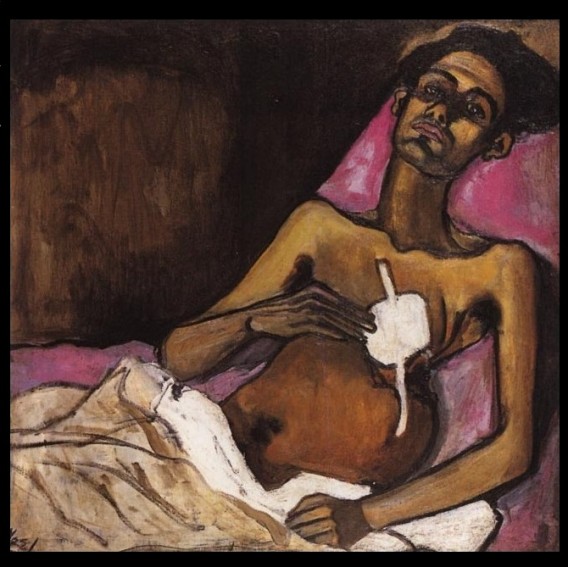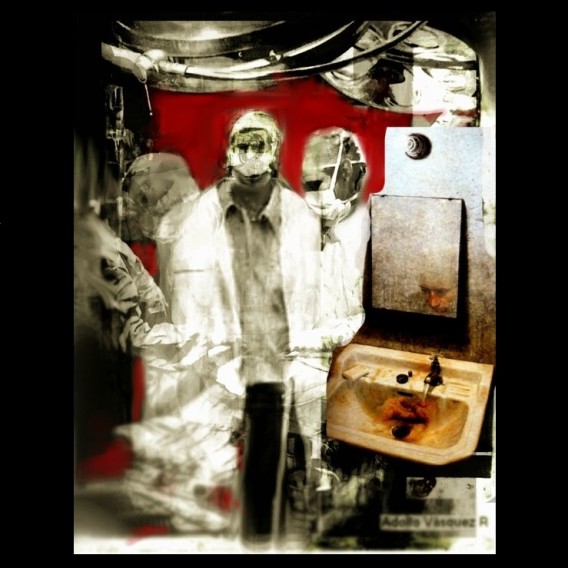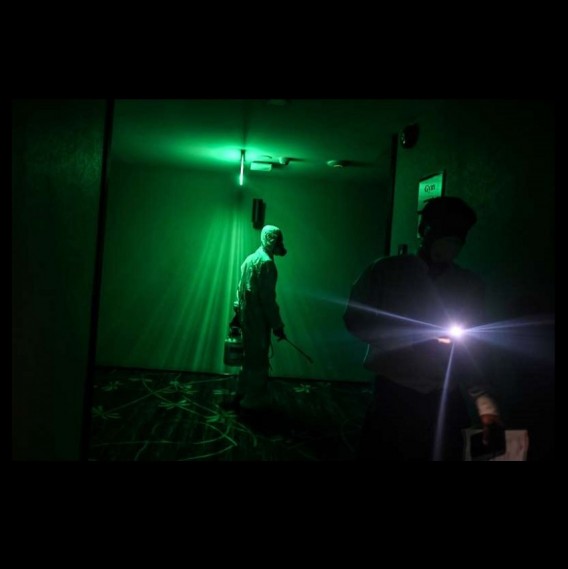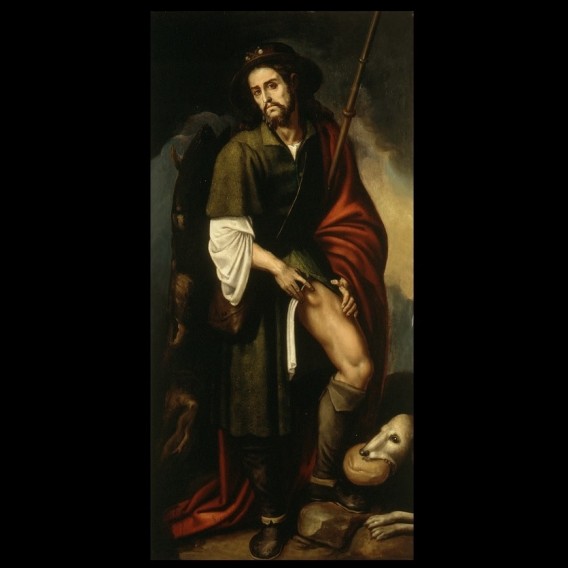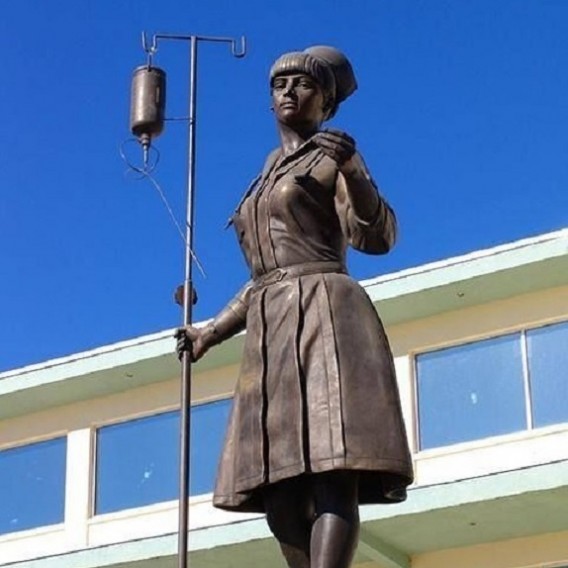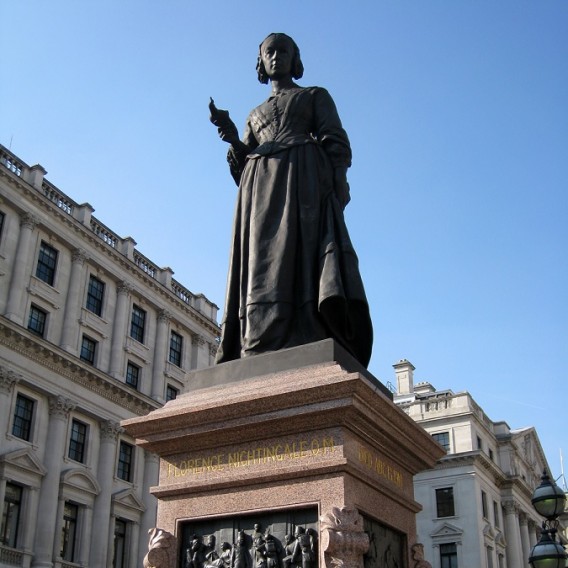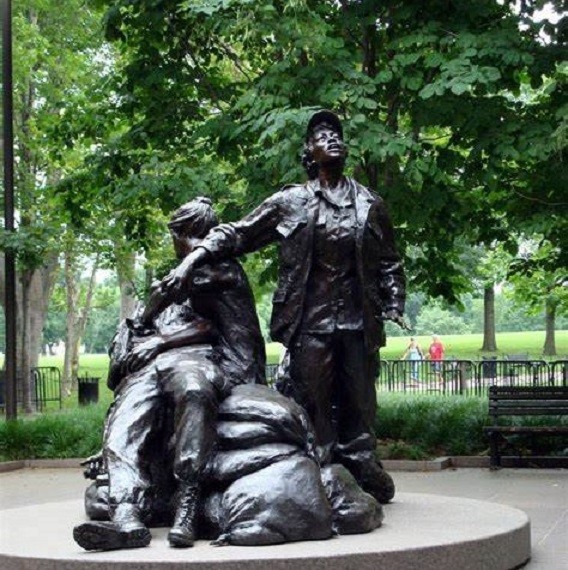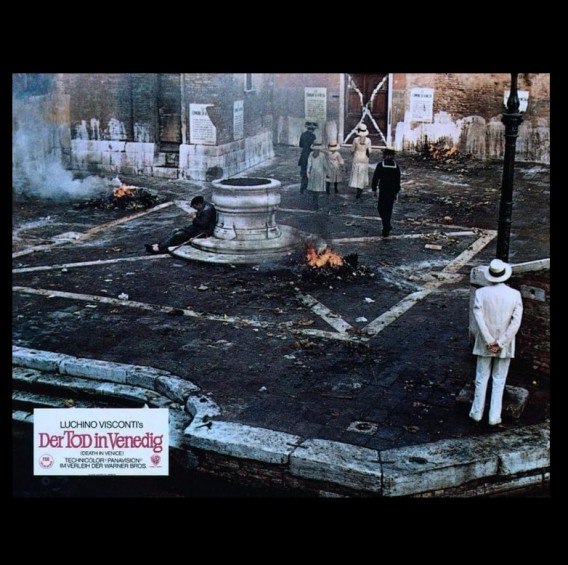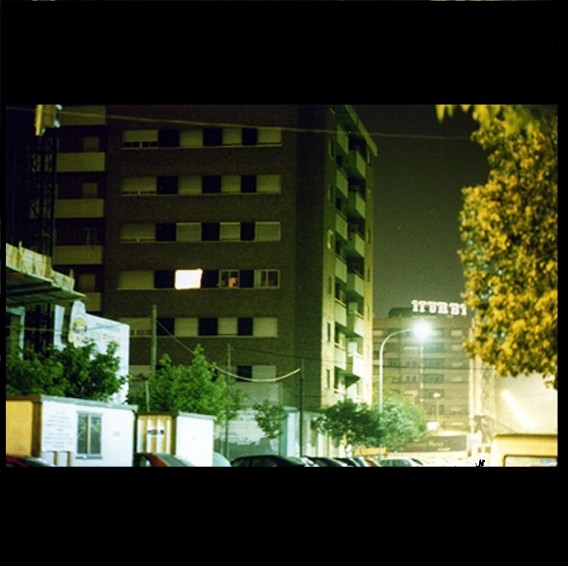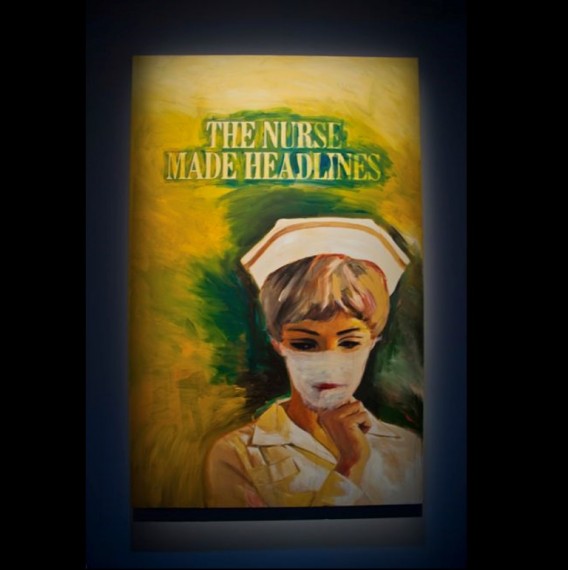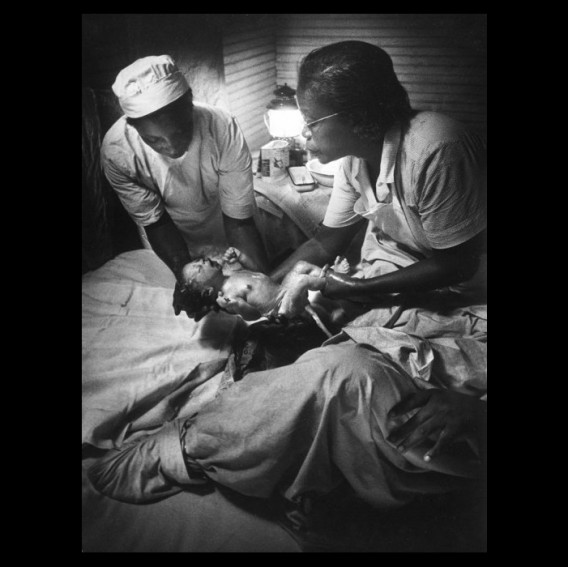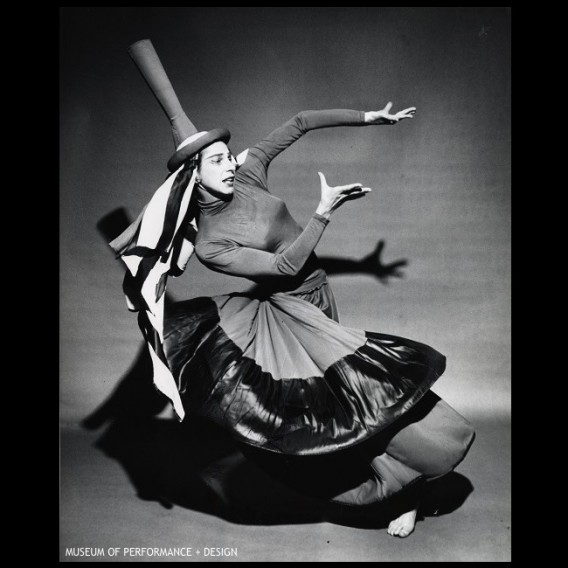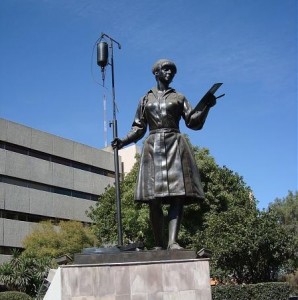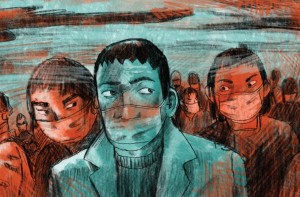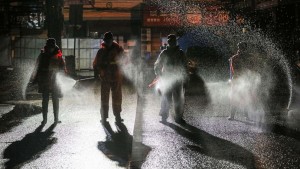“Coronavirus, fear and courage” is a very special exhibition in La Posta Foundation. Firstly, because, since La Posta is closed due to the coronavirus epidemic, we have made the decision to continue our online activities, and this exhibition is a good example. It is an exhibition that takes place on the La Posta website, and that will seek to interact with the public through Instagram. On the other hand, regarding the content of the exhibition, even following our tradition of small-format exhibitions (conditioned by La Posta’s own dimensions), however, we are not going to miss out on the possibilities offered by the Network, and an exhibition has resulted that in addition to showing contemporary experiences and Works, taking advantage of the possibilities offered by the medium for a dimensioning in other directions, offering the memory of some work from the past. All under the inspiration of what we have adopted as an item, which is none other than the epidemic that is sweeping the world: the coronavirus, adopted as an example of a pest; as well as the two parameters that frame the attitude of human beings towards the health crisis, which are fear and courage.
Deepening into the factor that, at the end of the process of preparing this unique exhibition, we can affirm that it has turned out to be the one that has posed the most relevant challenge, which is the dimensioning and formatting of the exhibition, in an environment that, initialy, it is presented to us as a vast ocean, as is the internet. In relation to this, it must be said that two great types of procedures have been put into play: on the one hand, works and experiences are shown that, being on the Net, it would be said that we are “sharing” them, as content published in any Facebook. In this case, what we could consider as an “authorization” has come to us, when we have received the author’s thanks for sharing. This is the case of a work like “Ritual One”, by Fabrizzio Ceppi. In other cases, they are works that, although they are also on the Internet, are not located in a given medium to share, such as Facebook, but rather other types of websites, which even include the warning that copyright is reserved. In such case we have requested express authorization. This is the case of the work of Adolfo Vásquez Rocca: “The operable man”. There have been other cases in which images taken from here and there have been used, in which it has not been possible to identify an autor.
There is an aphorism, one of those popular that circulates on the net, that says that “Courage (or bravery) is not the absence of fear, but the ability to act in the presence of fear”. Some attribute it to Mark Twain, others to Bruce Lee, in short, it is not the most relevant. The aphorism has merit because it expresses the absence of opposition between fear and courage. That is why we liked it and that is why we have adopted it as the title for the exhibition. It humanizes the reactions to the pandemic and lowers the demand for a kind of heroic behavior. It would be about staying calm and fulfilling the chosen duty (or the one that circumstances have put before us).
In the exhibition there is a good representation of brave figures. They are the ones that are becoming worthy of monuments and memorials (public art) in the time that will come after this pandemic. Because we all need symbols, and if we don’t make them we will make them for us.
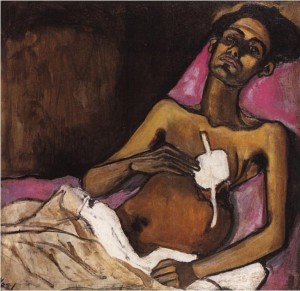 Alice Neel: “Tuberculosis in Harlem” (1940)
Alice Neel: “Tuberculosis in Harlem” (1940)
Some examples are offered for this symbolic construction work. We particularly liked Alice Neel’s work: “Tuberculosis in Harlem” (1940). A non-gimmicky work, in which the gloomy atmosphere in which the patient finds himself stands out, because the disease is associated with poverty and poor hygienic conditions in an inadequate domestic environment. That is why the constitutional proclamation of the right to enjoy decent and adequate housing (and putting at your service the duty of the public powers to adopt the pertinent measures and promote the necessary conditions ―which is known in our political culture like the organization of a public service―) is absolutely pertinent. On the other hand, in this work, as in others included in the exhibition, his symbolic contribution stands out, as well as his contribution to the knowledge of the disease. In this case, it is a portrait of the musician of Puerto Rican origin, Carlos Negrón, a person from the author’s circle of friends, who suffered tuberculosis at a very young age. In the image it is seen that he has undergone surgery, having undergone a thoracoplasty. Although normally those affected by tuberculosis were hospitalized in special centers, hospitals with large spaces to hinder the spread of the tubercle bacillus, rest and good nutrition. However, on some occasions this regimen was not sufficient and thoracic surgery was necessary, the practice of which consisted of making an incision that produced the release of the ribs. In this way, the collapse caused by the infection at the lung level was avoided, although its main drawback was the post-surgery deformity, which, as can be seen in the painting, manifested mainly in the development of cervical scoliosis, a consequence of increased muscle activity in the non-operated chest cavity area. Although at the time the portrait was painted, the incidence of tuberculosis indicated a downward trend, social situations, such as poverty, malnutrition, overcrowding, continued to be the factors that most predisposed to the development of the infection. It would not be until 1944, with the appearance of streptomycin, when chemotherapy treatment would begin, and later, with the discovery of isoniazid in 1952, this allowed the appearance of combined antibiotic regimens, thereby achieving a fundamental advance in the treatment of infection, which has led to magnificent results to date (Dr. Alberto Ortiz). The image is displayed by the “Fundación io” on its website. The original ―a 76.2 x 76.2 cm oil on canvas― is in the National Museum of Women Artists, Washington, D.C.
 Francisco Ribalta: “San Roque” (1600?)
Francisco Ribalta: “San Roque” (1600?)
Francisco Ribalta’s “San Roque” can be here for many reasons. To begin with, it is one of the magnificent works preserved by the Valencia Museum of Fine Arts. However, it is here for something more concrete, which has to do with the figure represented, which is Roque de Montpellier (first half of trecento approx.). We see him represented with an iconographic will, highlighting some of his most characteristic personal traits, in particular his pilgrim character and his vocation to help infectious patients of the time (mainly the plague). That vocation for help is what would lead him to catch himself, which is represented in the bulge that indicates in his leg, at the level of his groin, more or less, a typical symptom of the black plague. This attitude of surrender, at the risk of one’s own health, is the same one that we see now in the health personnel who care for patients by the Covid-19. We highlight that fact, because it is the one that gives iconic strength to the representation, along with other details. The defining elements of this iconography reflect a tradition that began to form almost after his death, from which time he began to enjoy enormous popularity throughout Europe. To such an extent would it become known in subsequent years, that this would lead him to be invoked, just one hundred years after his death, in the constitution of brotherhoods such as the Confraternità or Scuole di San Rocco founded in Venice in 1477, dedicated to care of the sick. In 1584 the Catholic Church canonized him, and from that moment he has been invoked as the patron saint of pilgrims, of those infected by epidemics (especially plague and cholera), of nurses, of those falsely accused, invalids and surgeons. It is convenient to pay attention to these details because, in a time in which so much attention is paid to the “story”, in the work of symbolic meaning of the experience, we cannot lose sight of the power of the images in this regard, much more powerful than literature. And, it is at this point, where the figure of Roque de Montpellier links the current monuments to anonymous or illustrious nurses who begin to appear in our parks and gardens.
It calls the attention of these sculptures that are like monuments “to the unknown nurse”, as before monuments were raised “to the unknown soldier”. There is an exception ―from a monument erected to an illustrious nurse―, as is the case with the one raised by Florence Nightingale, who stood out as a pioneer of nursing as we know her today, came to achieve fame and notoriety thanks to her participation in the Crimean War, treating the wounded as a nurse, that in the middle of the 19th century. It is a figure recognized worldwide. In the image we can see the sculpture that was erected in London in 1914, added to a larger sculptural group raised in memory of the Crimean War (1861, John Bell). The same thing happens to him to another prominent figure in the infirmary, such as Hazel Johnson-Brown. In his case, it is a woman who had to make her way not only in a world of men, but also overcoming prejudice due to her African-American condition. A statue was erected in her honor in Washington, D.C., but also as part of a larger sculptural group, in this case in memory of the women who participated in the Vietnam War. A sculptural group in the central position of a white woman holding a wounded soldier in the typical position of pity (an image impossible in reality, because nurses only provided services in hospitals, not on the battlefront).
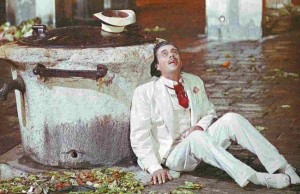 Still from “Death in Venice”, by Luchino Visconti
Still from “Death in Venice”, by Luchino Visconti
If we talk about (and look at) disease, pests and the symbolism that emerges from all this, we could not miss a first-rate and very endearing reference. This is the film “Death in Venice” by Luchino Visconti. As is the case with many films, this one is also based on a novel (Oh! That dependence of cinema on literature and theater!); This is a book by Thomas Mann, which tells a very bourgeois story of an artist tormented by his passion for beauty who does not know how to canalize. However, we bring this film here for another reason, because the whole story takes place in a Venice invaded by the plague, and the indifference of the upper class for the disease is striking. As in all of Luchino Visconti’s works, there is an omnipresent aspect that is the recreation of the decline of the aristocracy during the 19th century and the beginning of the 20th (until the touch of grace that the Great War brought about); But, more than this melodramatic aspect, it is interesting the contrast of this facet of the film with the realism with which the working class assumes the truth of the epidemic. There are two images that synthesize that contrast: on the one hand, the increasingly abundant use of makeup as the plague progresses to hide the effects of the disease – ―pathetic makeup, in the case of men, because it has no other model, at that time, than the one offered by the one used in the theater, which needs to emphasize facial features by deforming them, to supply poor lighting―, an image practiced by the upper class ―the protagonist the first and most prominent one―; and on the other hand, the image of the workers removing corpses on the Lido beach and other places in the city, regulars of wealthy tourists who visit Venice. Although, all efforts to symbolize class differences with iconic images, succumb to the inexorable passing of time, and in the end the image that remains of the film considered as a whole, is the image of the time it was made, the years seventies of the last century, and that pretension to make emerge the spirit of what in Spain was called “la gauche divine” [“the divine left”].
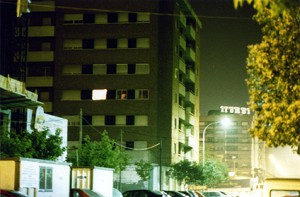 “Secret and Modesty” (1995), by Pepe Miralles
“Secret and Modesty” (1995), by Pepe Miralles
We could not ignore in this small compilation, a much-loved image that has already been exhibited in La Posta. This is “Secret and Modesty” by Pepe Miralles. As the best that can be said about it has been explained by Pepe himself, we will limit ourselves to referring to it: “When Juan Guillermo died, a group of friends had to empty his house. During those days we took photographs and videos of what was still there. The emptying of the house and the artistic works became confused. Over time we have realized that everything we did (empty and document) helped us to reflect on death and understand what it was that we were really living. We were able to appreciate the evicted value that emerges from the belongings when they are no longer present. We live the process of emptying a house as the “eviction” of life caused by a virus that enters your body to expel you from it. One night we decided to wait for all the lights in the building’s apartments to go out. While the neighborhood slept, we turned on the light in Juan Guillermo’s room, reliving his presence in that space where so many nights the same light had been on, relieving vigils of waiting and uncertainty. We went down to the street and photographed the scene. We picked up the tripod and the camera, went up to the apartment, turned off the light and left that house that was already completely empty”. … A good example of how the story builds the symbol, but in the end its best incarnation is an image. In this case a simple image, but it has all the ingredients to become a symbol.
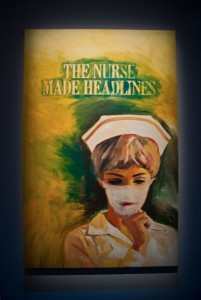 “The Nurse Made Headlines” (2005), Richard Prince
“The Nurse Made Headlines” (2005), Richard Prince
Going back to the beginning, and the concern we expressed about the formats and scope of an exhibition prepared for the network and with the resources provided by the network, we have turned our attention to Richard Prince’s “The Nurse Made Headlines”. It is known that this artist develops his activity within the limits of personal authorship, which is confused with the appropriation of the work of others. In reality, all artistic works move in that limit, because no work is produced in a vacuum, but is the fruit of a historical evolution, of allowing oneself to be influenced and having the vocation to influence those who will come later. But in the case of Richard Prince there is a point of provocation, by making it extremely patent. It became very popular in the eighties of the last century by reproducing the images of the Marlboro tobacco advertisement, whose main reason was the figure of the cowboy, originally created in 1954 by the Leo Burnett agency. In this appropriation there was a double provocation, because the idea of authorship was transgressed, and because the figure of the cowboy was a male icon, the appropriation was carried out by an artist who was known in the closest circles to be gay, and he did it in order to create an inversely contrary icon for the gay community. So much so ―that he succeeded― that the first gay bar, as such, in the modern sense, that opened in Valencia, was set in a Far West tavern and his name was as appropriate as “Dakota”. In the image that we now bring here, a nurse appears with the slogan “The Nurse Made Headlines” (another constant in her work: the significance of the image with a slogan, often the only personal contribution). As the relation of the slogan with the image is often mysterious, we are not going to spend much time on its analysis; only in what interests us, and that is that, speaking of nurses, about an image of the fifties of the last century (by the cap), it is worth noting that the nurse made news, that is, that she had come out of the initial anonymity to which she reduced her condition; a wake-up call that times were changing, and that the traditional junior role assigned to nurses, ultimately women, was on the way to an end.
Works on display:
- ─ “Ritual One” (2017), Fabrizzio Ceppi
- ─ “Tuberculosis in Harlem” (1940), Alice Neel.
- ─ “The operable man” (2001) Adolfo Vásquez Rocca
- ─ “San Roque” (1600?), Francisco Ribalta
- ─ “Death in Venice” (1971), Luchino Visconti
- ─ “Secret and Modesty” (1995), Pepe Miralles
- ─ “The Nurse Made Headlines” (2005), Richard Prince



